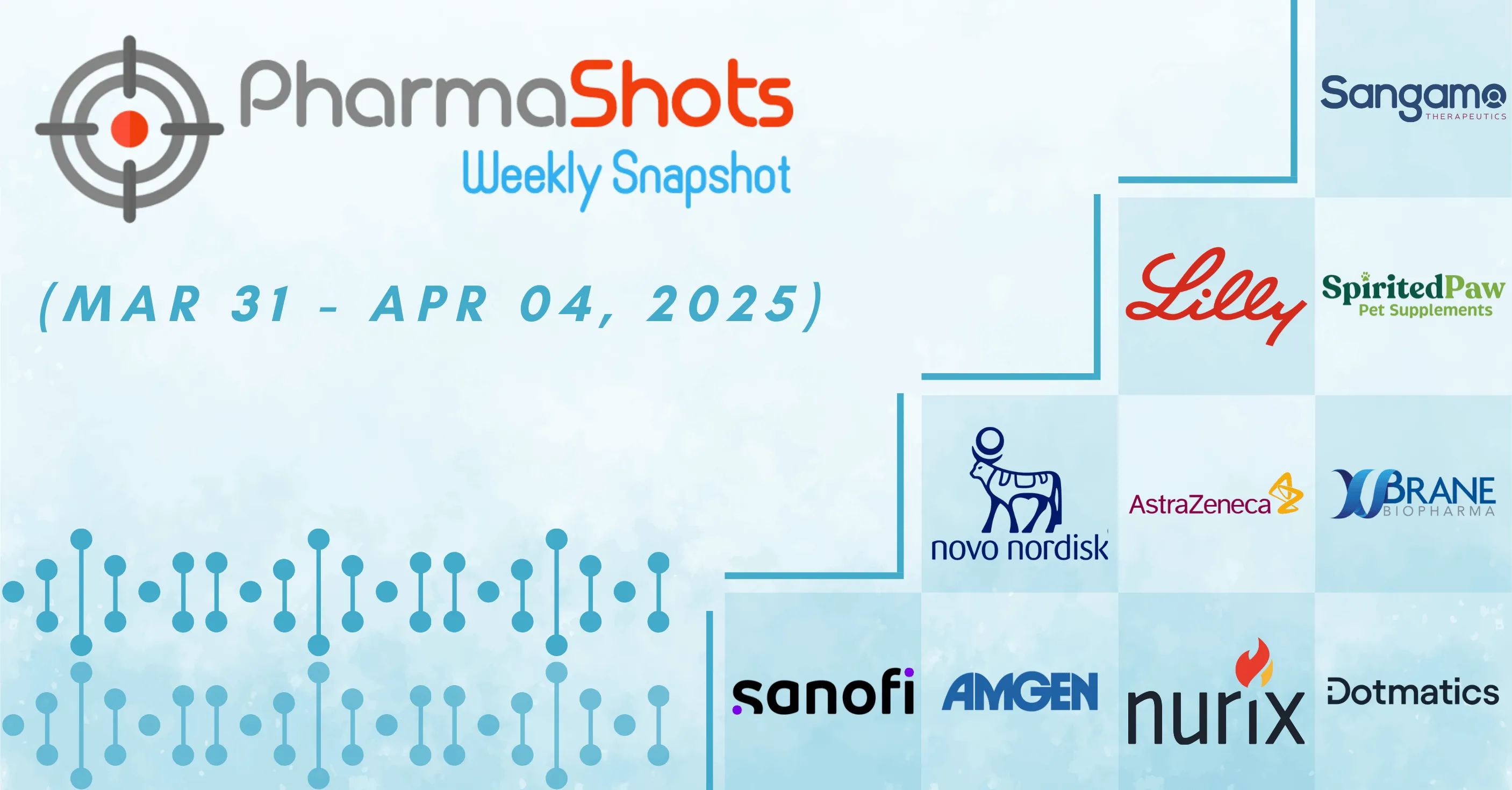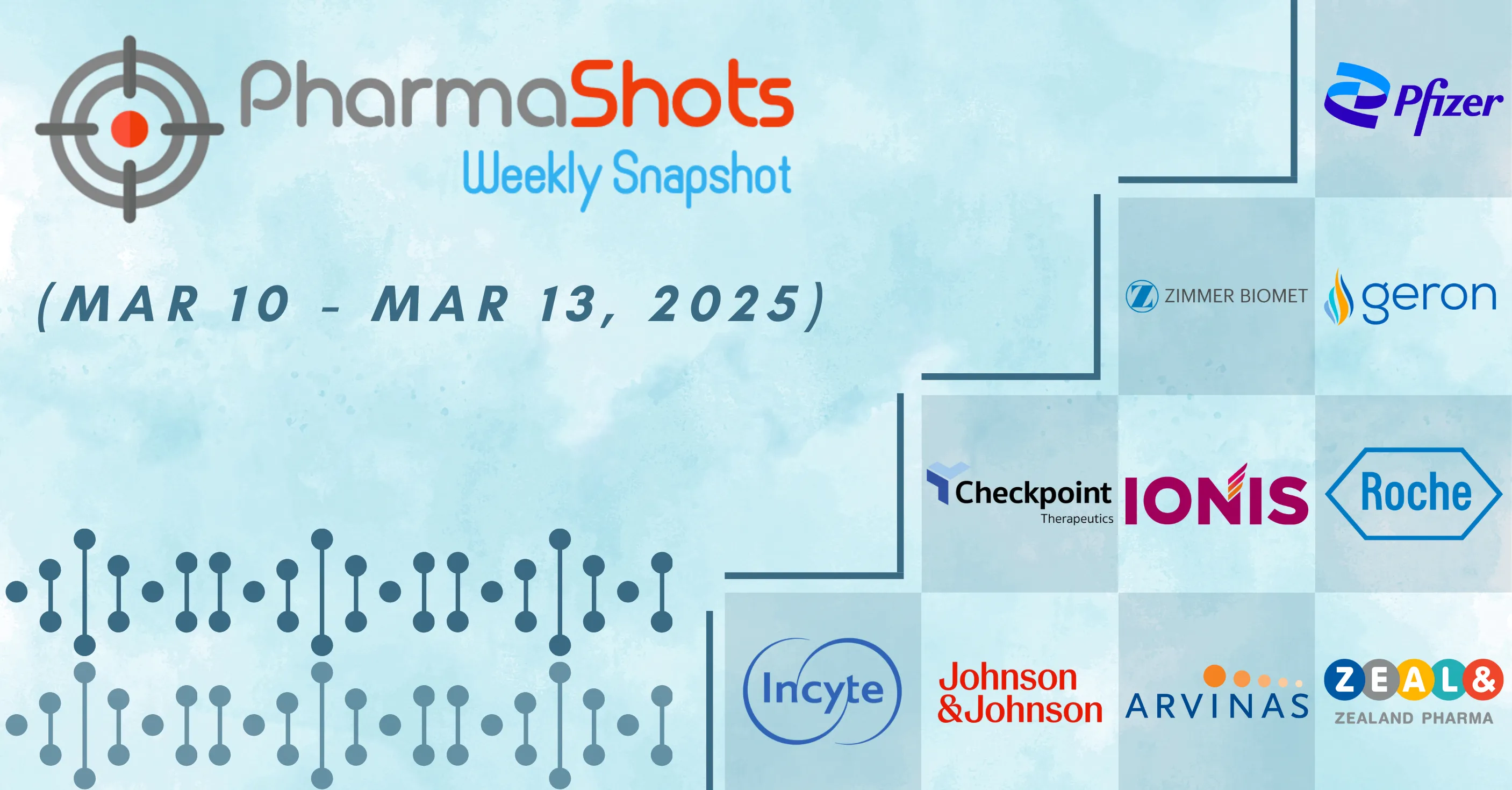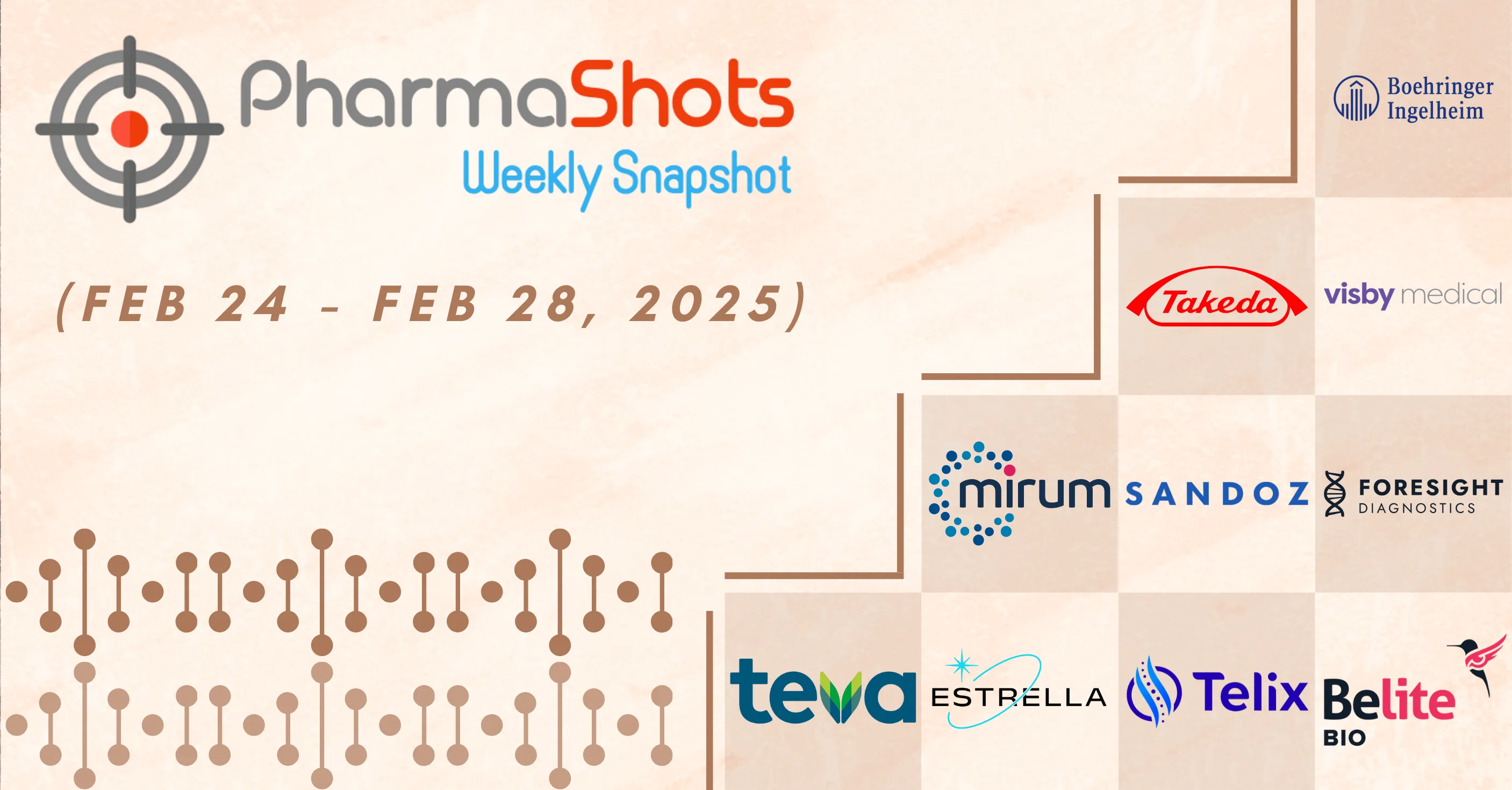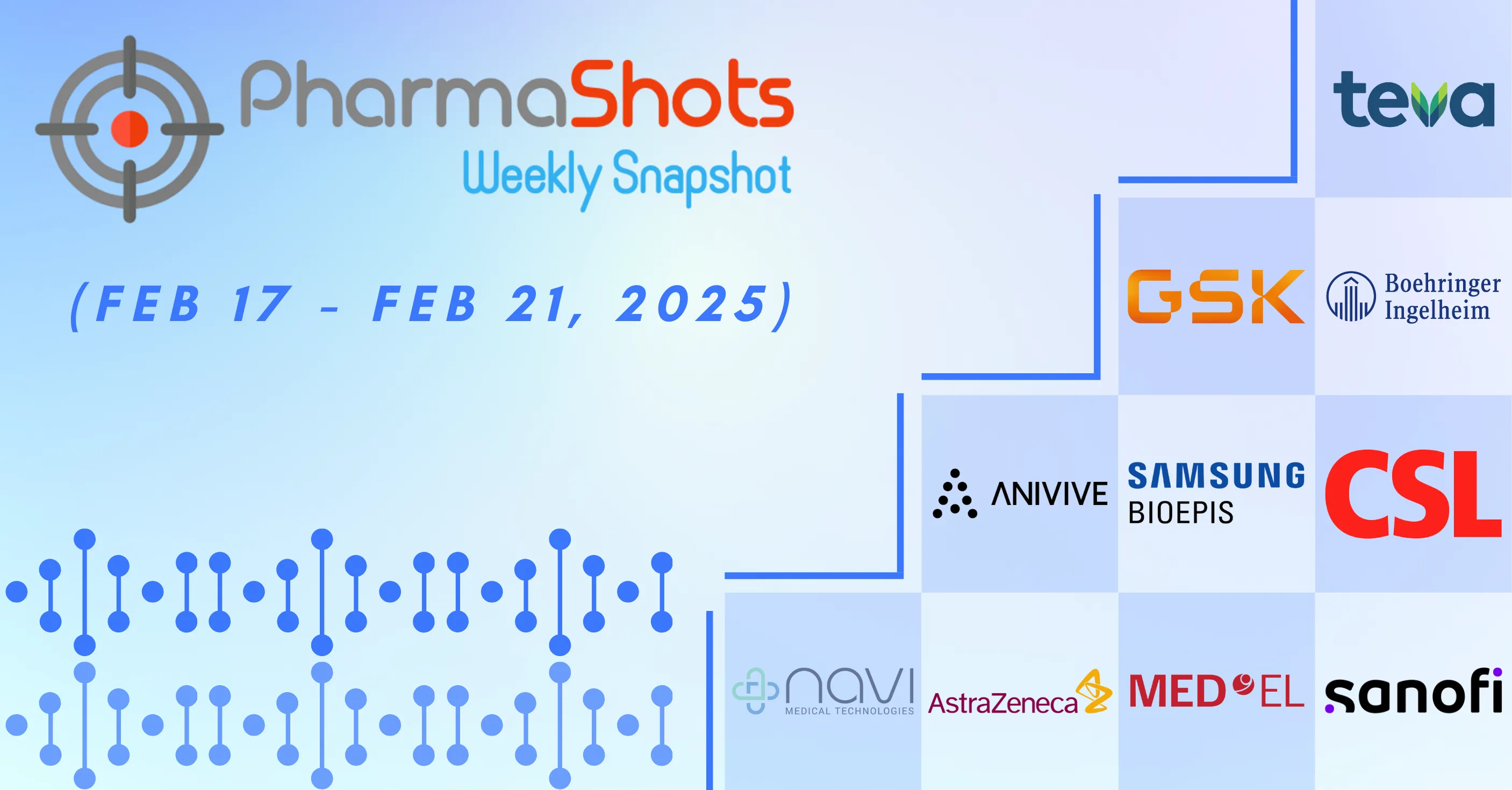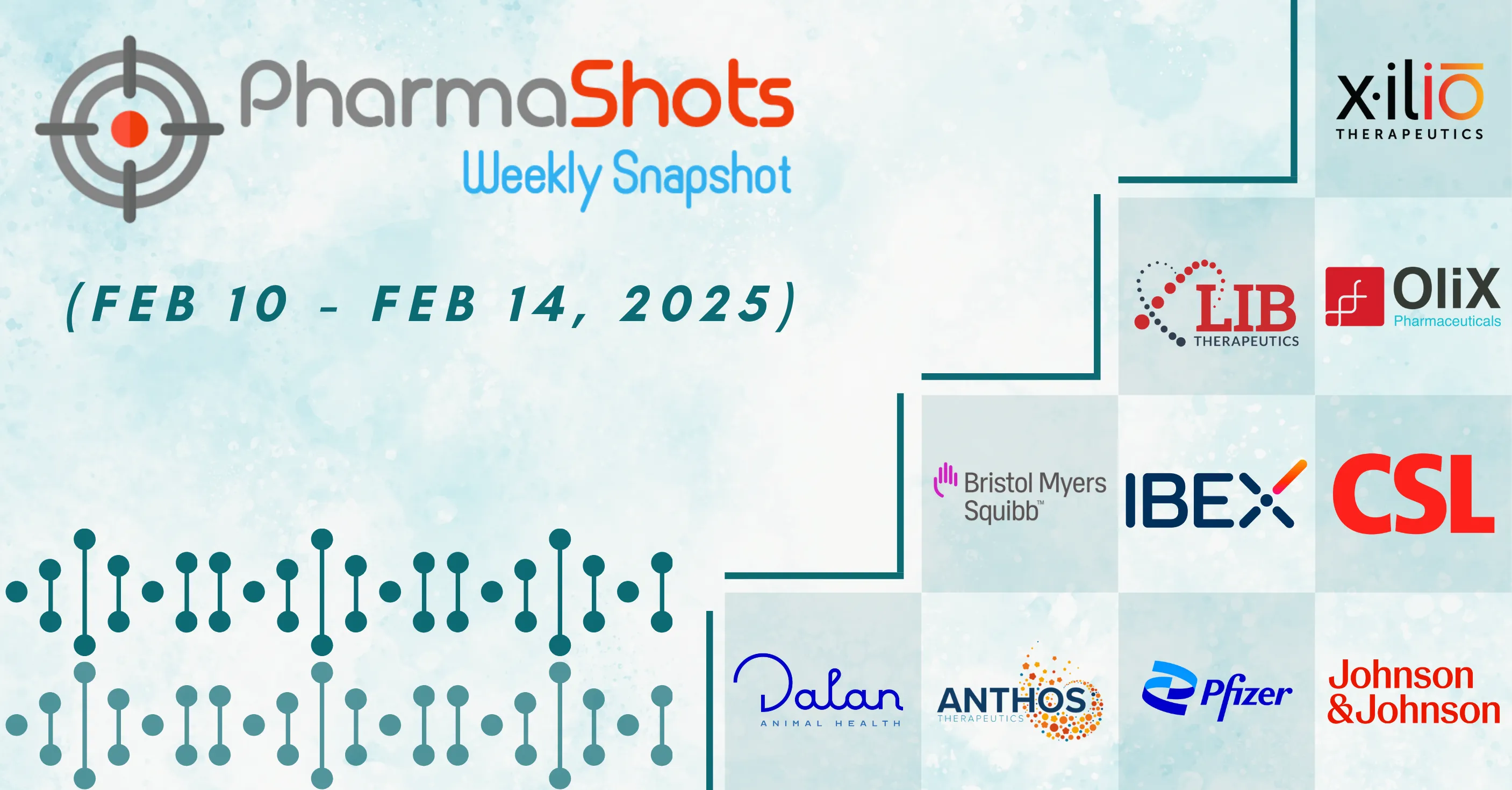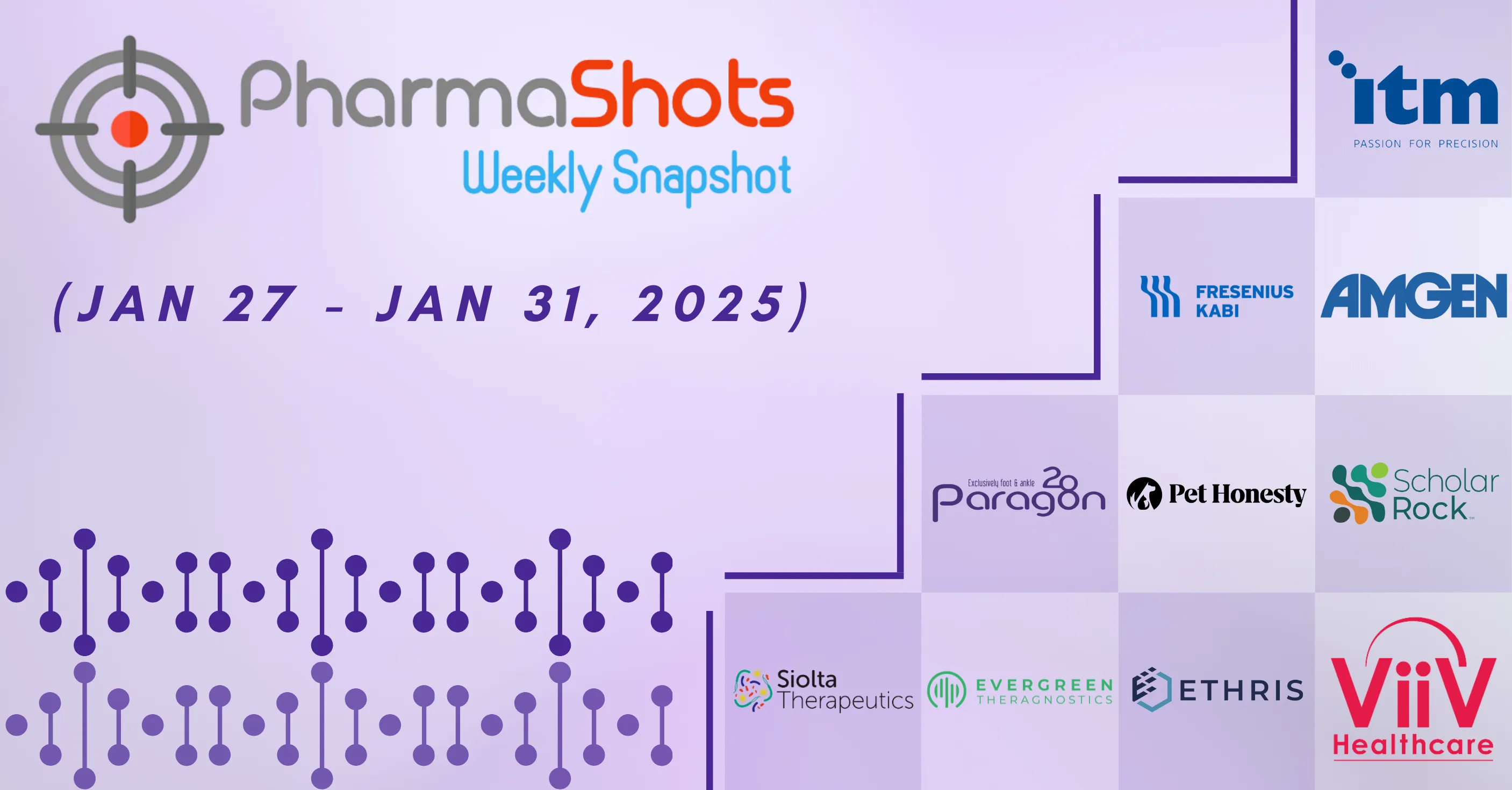
PharmaShots Weekly Snapshot (August 12-16, 2019)
![]()
Published: Aug 16, 2019 | Tags: 510(k), Ablation, Clearance, Profound Medical, Prostate Tissue, Receives, TULSA-PRO, The US FDA

Published: Aug 16, 2019 | Tags: CONFIRM, Hepatorenal Syndrome Type 1, Mallinckrodt, P-III, Positive, Reports, Results, Terlipressin

Published: Aug 15, 2019 | Tags: Baxter, Calorimetry, Clinical Nutrition, Collaborates, Commercialize, Cosmed, Device, Globally, Indirect, Q-NRG+, Support

Published: Aug 15, 2019 | Tags: EMA, Filgotinib, Galapagos, Gilead, MAA, Reports, Treat, Validation

Published: Aug 16, 2019 | Tags: Agreement, Angelman Syndrome, Develop, GeneTx, GTX-102, Signs, Ultragenyx

Published: Aug 16, 2019 | Tags: Approval, Entrectinib, FDA, Genentech, Metastatic Non-Small Cell Lung Cancer, NTRK, Gene, Fusion-Positive, Solid, Tumors, Receives, ROS1-Positive, Rozlytrek US
Published: Aug 14, 2019 | Tags: Evinacumab, Homozygous Familial Hypercholesterolemia, P-III, Positive, Regeneron, Reports, Results, Study
8. Regenerons Eylea (aflibercept) Receives the US FDAs Approval as a Prefilled Syringe

Published: Aug 14, 2019 | Tags: Aflibercept, Approval, EYLEA, FDA, Prefilled, Receives, Regeneron, Syringe, the US

Published: Aug 14, 2019 | Tags: 1L, Advanced, AstraZeneca, Lynparza, Maintenance Therapy, MSD, Ovarian Cancer, P-III, PAOLA-1, Report, Results, Study

Published: Aug 13, 2019 | Tags: Agreement, Bausch Health, Brodalumab, Commercialize, Develop, Enters, Europe, Leo Pharma, Moderate, Outside, Psoriasis, Severe, Sub-Licensing

Published: Aug 13, 2019 | Tags: Acalabrutinib, AstraZeneca, Breakthrough Therapy Designation, Calquence, Chronic Lymphocytic Leukemia, FDA, Receives, US

Published: Aug 13, 2019 | Tags: Adults, Approval, Chronic, European Commission, Ibrutinib, Imbruvica, Janssen, Lymphocytic Leukaemia, Receives, Waldenstrom's Macroglobulinemia
![]()
Published: Aug 13, 2019 | Tags: 1L, Adults, Approval, atezolizumab, ES-SCLC, Extensive-Stage, Small Cell Lung Cancer, Health Canada, Receives, Roche, Tecentriq

Published: Aug 13, 2019 | Tags: Eli Lilly, ixekizumab, IXORA-R Study, Moderate-to-Severe, P-IV, Patients, Plaque Psoriasis, Report, Results, Superiority, Taltz
15. Jazz Pharmaceutical to Acquire Cavion for the Expansion of its Sleep and Neurology Portfolio

Published: Aug 13, 2019 | Tags: Acquire, Cavion, Expansion, Jazz Pharmaceutical, Neurology, Portfolio, Sleep

Published: Aug 13, 2019 | Tags: Activated Phosphoinositide 3-kinase Delta Syndrome, Agreement, CDZ173, Commercialization, Development, Exclusive, Novartis, Pharming, Signs, Treat

Published: Aug 12, 2019 | Tags: Approval, Baxter, Health Canada, Maximizing, PrisMax System, Receives, Treatment

Published: Aug 12, 2019 | Tags: Advancement, Agreement, Boehringer Ingelheim, Cancer, Multi-Year, Signs, Therapies, University of Texas

Published: Aug 12, 2019 | Tags: Innovative, Medical Device Designation, NMPA, Novocure, Optune, Receive, Treating, Field, Delivery System, Tumor, Zai Lab

Published: Aug 12, 2019 | Tags: Advanced, Bavituximab, Cancer, Collaborate, Evaluate, Gastric Gastroesophageal, Keytruda, Merck, Oncologie, Treatment
21. Atricure to Acquire SentreHEART for Expansion of Therapie s to Treat Atrial Fibrillation

Published: Aug 12, 2019 | Tags: Acquire, Atricure, Expansion, SentreHEART ,Therapies, Treat
22. SMS-Oncology Signs a Clinical Trial Collaboration with Cytovation to Treat Solid Tumors

Published: Aug 12, 2019 | Tags: Clinical, Collaboration, Cytovation, Signs, SMS- Oncology, Solid, Treat, Trial, Tumors

Published: Aug 09, 2019 | Tags: Approval, , Biktarvy, CHMP, Emtricitabine, Gilead, Receives, Tenofovir Alafenamide, Treatment
Tags

This content piece was prepared by our former Senior Editor. She had expertise in life science research and was an avid reader. For any query reach out to us at connect@pharmashots.com




